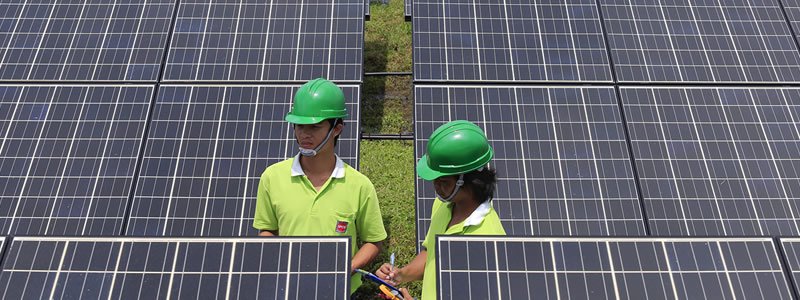
Thai renewable energy developers are expanding into overseas markets while waiting for news of further procurement rounds at national level. Thai Solar Energy, for example, is reported to be looking for partners to develop up to 50 MW of PV plants in Japan, with negotiations expected to be complete by the middle of this year. The developer bagged 17.5 MW of Japanese solar projects last December under a partnership with Japan’s Prospec Holdings Inc.
Thai Solar Energy is said to be targeting 300 MW of installed capacity overseas within three years, from 100 MW currently.
Meanwhile Wind Energy Holdings, majority-owned by Thailand’s KPN Group, has confirmed plans to purchase CWP Renewables, an Australian firm currently developing more than 1.4 GW of wind and PV projects across Australia. The moves come as Thai developers await further procurement announcements in their home market.
Most of an initial 3 GW target for solar in 2021 has already been awarded, with a final 600 MW due to be confirmed this April
This last tranche of capacity was originally due to be awarded last December but the application process was “dogged by accusations of irregularities,” said Phil Napier-Moore, programme director for solar in Mott MacDonald’s Asia Pacific Renewable Power Division, with results now expected within April. The government has not set a date for further renewable energy application rounds, Napier-Moore said. A further 200 MW allocation was announced, for which timelines remain unclear. “There are no other immediate bid rounds on the cards.”
Last year the administration revised its solar energy targets upwards, to 6 GW, but also extended the timeline for deployment, from 2021 to 2036.
According to a November 2015 report on alternatives for power generation in the Mekong sub-region, authored by Intelligent Energy Systems and Mekong Economics, the government’s current energy focus is on biofuels. Within the current Thai Alternative Energy Development Plan, “solar and wind power [are] to be promoted at a later stage ‘once the cost is competitive with the power generation from liquefied natural gas’,” said the report.
It is also unclear whether the current solar feed-in tariff of around USD$0.16 per kWh will apply to any future procurement rounds, said Napier-Moore.
In the meantime, he said, “some players are looking at grid-parity projects” such as rooftop installations for commercial or industrial energy users.
Long-term, nevertheless, the outlook for Thai solar remains rosy. “Renewable energy in Thailand is a hedge against natural gas prices,” Napier-Moore said. “Within that, solar’s share has continuously increased because other renewables have been harder to deploy.”
The long-term opportunity likely explains continued high interest in Thailand’s solar market. While Thai companies are looking abroad, for example, the Toshiba-Mitsubishi joint venture TMEIC in February established a subsidiary in Bangkok to supply the market with inverters and other power equipment components.
